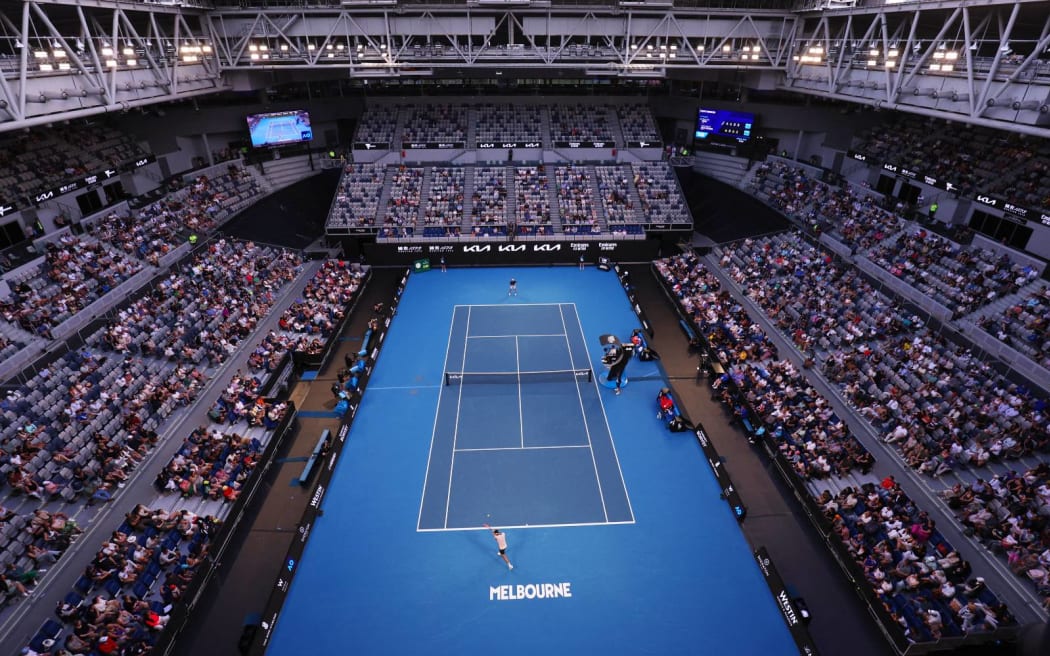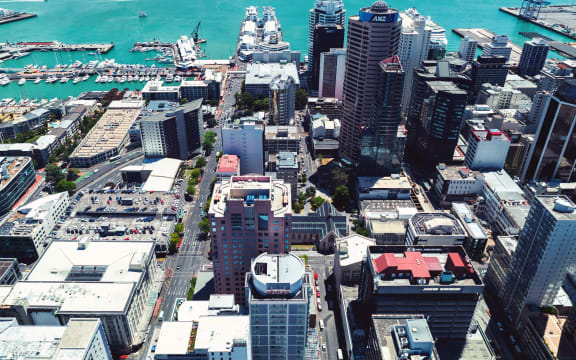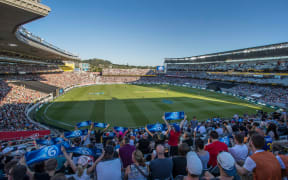By Dave Worsley*

A general view of John Cain Arena during the men's singles match between USA's Taylor Fritz and Argentina's Facundo Diaz Acosta on day one of the Australian Open tennis tournament in Melbourne on 14 January, 2024. Photo: MARTIN KEEP / AFP
Opinion - As any concrete plans regarding a downtown stadium in Auckland drag on, it's easy to see how effective the Melbourne sports precinct is and how sports stadiums close to a city centre really work - particularly the Australian Open.
It's the only Grand Slam which is situated within 10 minutes' walk from main streets.
The US Open is a long way from Manhattan and not in the best location for hotels or tourists.
Wimbledon wants to expand to cater for more people but is restricted, while Roland Garros is within the city, but still a decent walking distance - and also restricted by its size.
The Australian Open reigns supreme with accessibility. You can catch a tram (which stops outside). Flinders Station is just up the road for trains. It's five to 10 minutes' walk from Federation Square, there are taxi and Uber stands (both of which price gouge) and even river taxis.
The location means city centre bars, restaurants and hotels gain massively from the over 900,000 spectators, let alone the players and their entourage. It's a win-win for everyone.
Within the precinct are the Australian Open facilities plus the National Training Centre. To walk from one end to the other is around 1.5km.

The Auckland CBD. Photo: 123RF
John Cain Arena is used for tennis, but also netball and NBL basketball, even with some open-air matches. Margaret Court Arena, another tennis venue, also hosts a variety of sporting events.
In fact, Rod Laver Arena has been the venue for the 2006 Commonwealth Games gymnastics and the world swimming championships.
Across the road is AAMI Park, where A-League teams, NRL's Melbourne Storm and Super Rugby's Melbourne Rebels all play.
There's the Melbourne Sports and Entertainment Centre which was originally for swimming, but later changed to basketball, plus Olympic Park Oval were Collingwood Football Club train as well as Gosh's Paddock public playing field, with a training and admin centre.
It shows that limiting any stadium in Auckland to just one or two sports on the ground would be a mistake.
Build a stadium where the grass in the middle isn't the biggest asset, but location is the golden goose, so is the facility which can host big conferences (which actually make money back for the stadium) and much more.
If an Auckland stadium is built, and not as an add-on the side of some other facility, it should have a couple of squash courts - athletes love using squash for fitness, and they could be hired hourly by workers. Make one of the courts glass which can have seating capacity around it, and an international tournament can be held there.
Maybe a full basketball court so that an NBL game can be played - again it can be hired for lunchtime and after-work games by city workers.
If a stadium is close to public transport like the Melbourne sports precinct, it could be an absolute bonus for the city and for New Zealand.
* Tennis journalist Dave Worsley has been covering the Australian Open and is an RNZ contributor.





